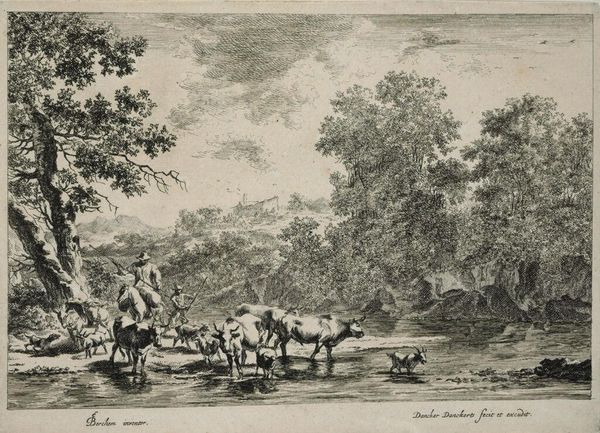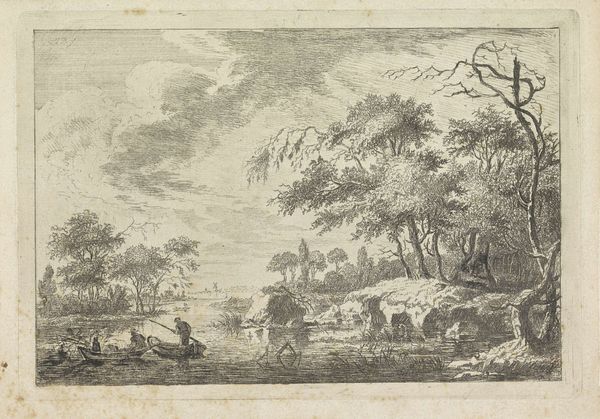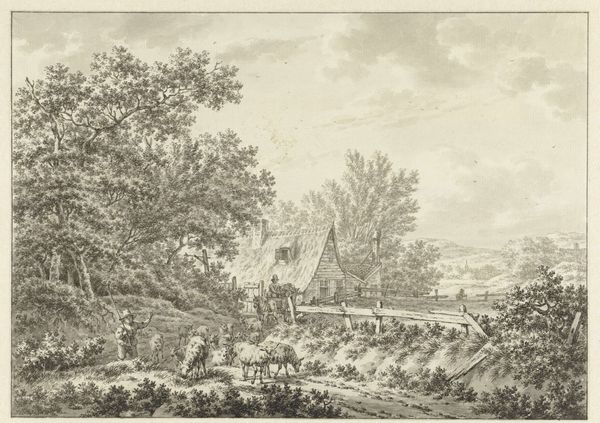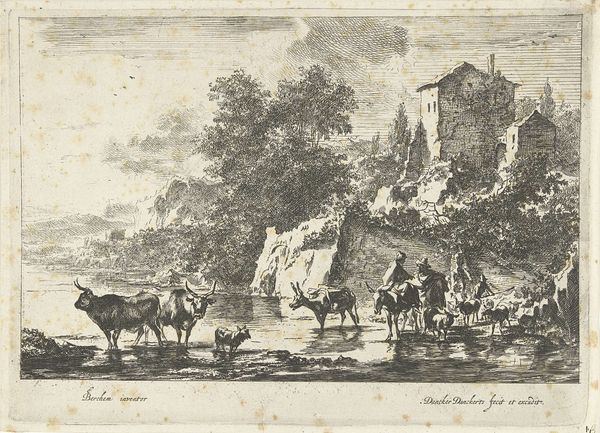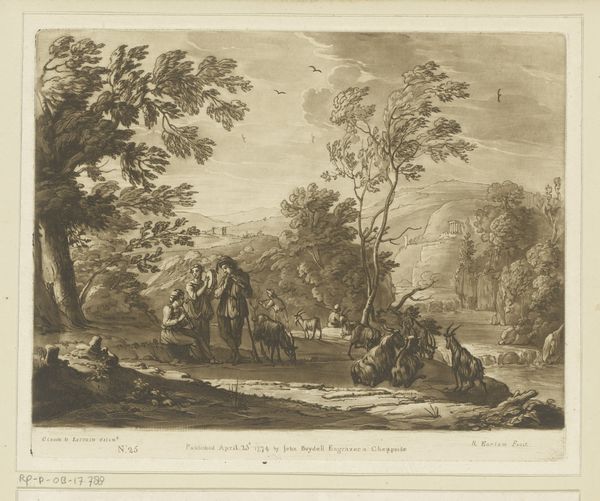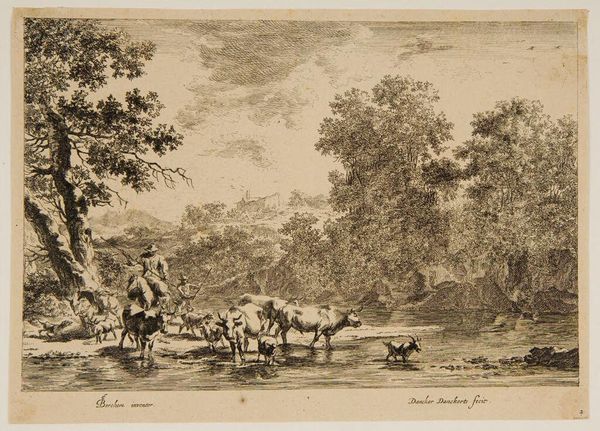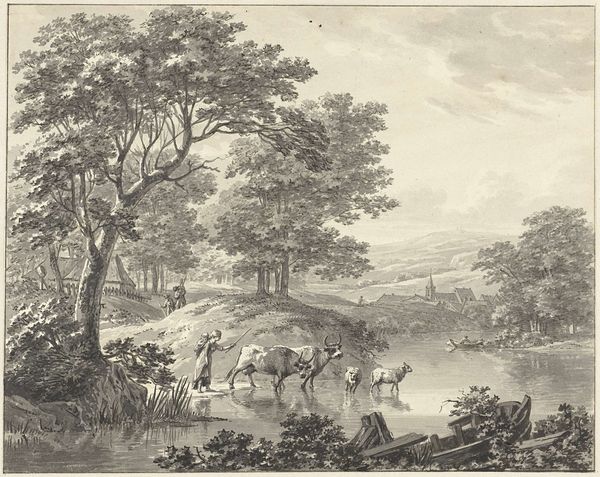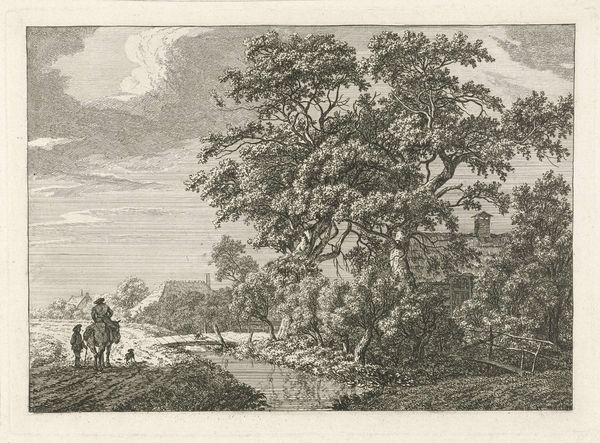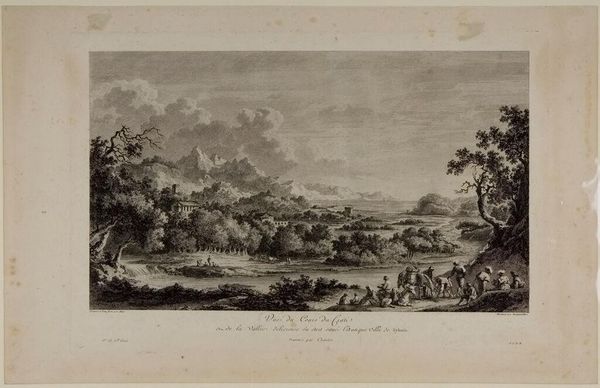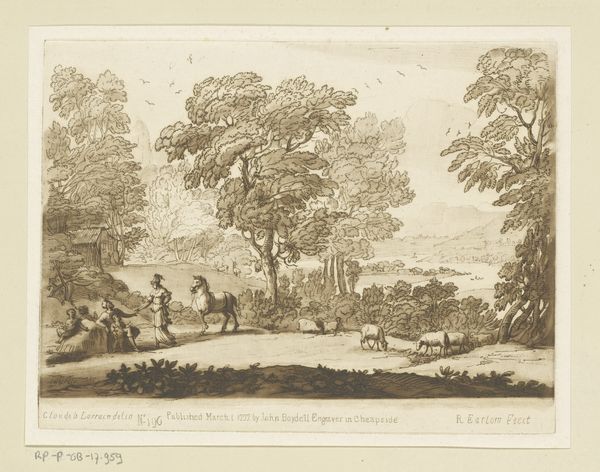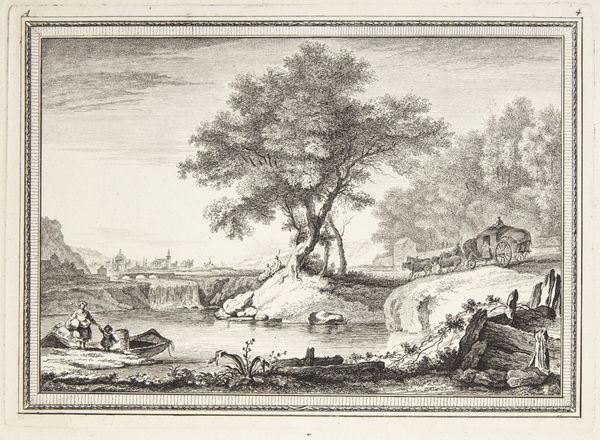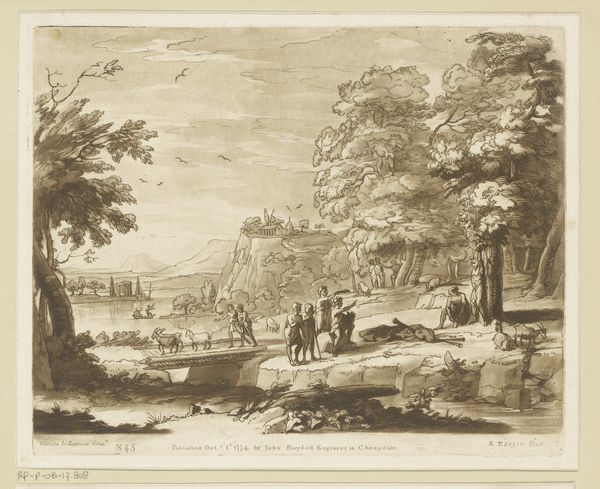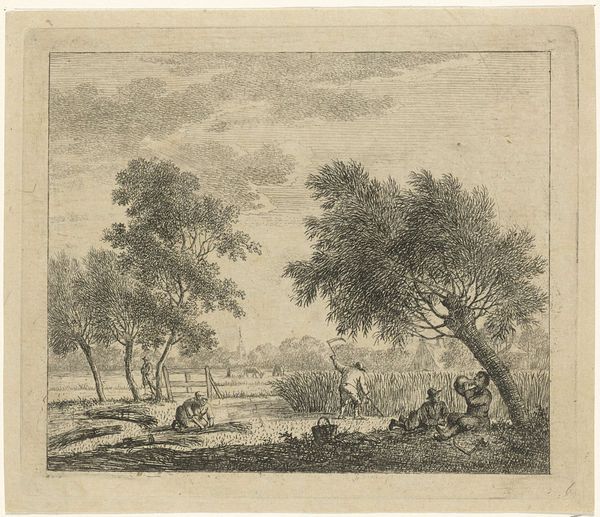
Italiaans landschap met herder te paard en vee bij rivier 1643 - 1666
0:00
0:00
danckerdanckerts
Rijksmuseum
print, etching
#
baroque
# print
#
etching
#
landscape
#
etching
#
genre-painting
Dimensions: height 174 mm, width 243 mm
Copyright: Rijks Museum: Open Domain
Curator: Looking at Dancker Danckerts' "Italian Landscape with Shepherd on Horseback and Cattle by a River," which dates sometime between 1643 and 1666, what jumps out at you? Editor: The texture. It’s starkly rendered, yet it also evokes the lazy haze of a pastoral scene. A little at odds with itself. Curator: In a way, yes, that's reflective of its making. The scene is created through etching, a printmaking technique. Think of the labor involved—the physical act of scoring that plate, biting it with acid... It’s a controlled process applied to this supposedly 'natural' subject matter. Editor: And 'natural' in quotes because what's actually being portrayed is a very curated, constructed view of Italian rural life for a specific audience. The land and labor romanticized into picturesque commodities. Do we know what type of person would acquire such an image back then? Curator: Likely someone from the burgher class—affluent city dwellers aspiring to the landed gentry ideal. This image would be easily reproduced and sold, allowing that ideal to disseminate. The scale supports the likelihood of personal collection. It allows the collector to privately construct their fantasy of country life, and conveniently avoids thinking about where his food came from or who made the textiles he bought and wore. Editor: It’s so subtle, the propaganda of tranquility. Though it seems the artist added a few animals to that scene, I wonder who would have been impacted by that industry… Was Danckerts critiquing or celebrating that relationship? Curator: The perspective feels neutral, yet also knowing. We find this image in the Rijksmuseum's collection now—where it can prompt us to question the ethics of representation in art and the impact of our contemporary consumption on those who remain in the margins. This little etching certainly offers more than initially meets the eye. Editor: Indeed. Something to remember when we consume images ourselves!
Comments
No comments
Be the first to comment and join the conversation on the ultimate creative platform.
